LG G3 vs Google Nexus 5
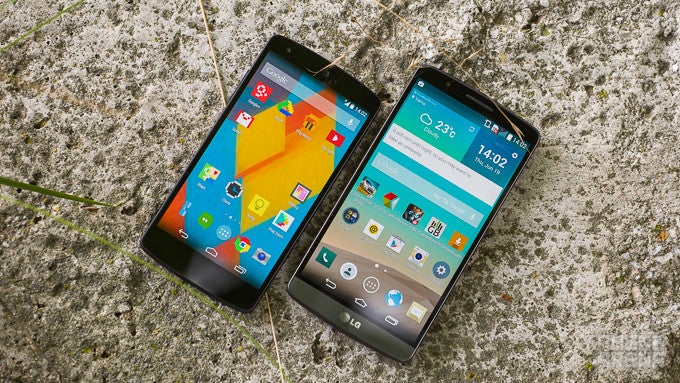
Introduction
The LG G3 is all the rage right now, and that's not surprising in the least. Boasting latest generation hardware, including a Quad HD (1440 x 2560 pixels) resolution display, there's a lot about the G3 that causes a drool to form at the end of the lips of fans. And while the G3 has already proved itself fit to compete with top shelf devices from rival manufacturers, how does it handle a device from its own camp?
Indeed, the LG-made Google Nexus 5 is a very different device from the LG G3 in a very major way: its price tag typically reads less than $350 nowadays. That's about half the asking price of the G3. As importantly, this massive discount doesn't entail as massive a sacrifice in overall performance, as the Nexus line is all about great hardware at affordable pricing.
So how do they compare? Let's check them out.
UPDATE (Jun 25, 2014): This comparison was originally based on our experience with the Korean version of the LG G3. After testing the International (European) version of the phone, we've updated the story with our new findings, affecting the display, camera and battery performance.
Design
The Nexus 5's gravitas is undermined by its relatively humble looks. The G3 is definitely the more stylish, but less practical choice.
While the Nexus 5 is far from a bad-looking device, it has no choice but to concede at the face of the G3. Indeed, the G3's metallic back makes short work of the rubberized rear on the Nexus 5, which feels decidedly less high end and is characterized by its oversized camera unit. And though there's no arguing that, it should be noted that, from a purely utilitarian point of view, the Nexus 5 is the better pick, as it's more grippy and comfortable to hold. And that's despite the more aggressively-rounded back of the G3, which is nevertheless a bit slippery.
But the N5's win in terms of ergonomics isn't simply a byproduct of a comfier rear shell – the affordable flagships' dimensions also come in play. Indeed, while the LG G3 has super-slim bezels all around, the Nexus 5 is not far behind, and its much smaller, 5-inch display means a more manageable footprint: 137.84 x 69.17 x 8.59 mm (5.43 x 2.72 x 0.34 inches) versus 146.3 x 74.6 x 8.9 mm (5.76 x 2.94 x 0.35 inches) for the G3.
The Nexus 5 also has the more rigid, uncompromising build of the two, and we especially like the use of ceramic for the power and volume rocker, both of which are conveniently placed on the sides of the phone. In comparison, the G3 makes use of rear-placed keys, and these will take some getting used to before you feel right at home. In terms of clickiness and overall feedback these provide, we tend to prefer the Nexus 5, though that's definitely not a con for the G3 – it's just that the N5 is in a league of its own when it comes to tactile feedback and travel.
Display
For all the extra pixels and inches the G3 has over the Nexus 5, the reality is that it produces a less color-accurate image.
The LG G3's extraordinarily pixel-dense, 5.5-inch 1440 x 2560 (QHD) resolution display is by far its most standout feature. In reality, however, this super-crisp IPS panel falls short in certain regards when compared with the more standard, 5-inch 1080 x 1920 (FHD) resolution IPS display on the Nexus 5.
For example, the G3's color temperature of 7100 K (6500 K is the reference value here) is good, but not impressive, especially compared with the excellent 6800 K of the Nexus 5. This results in image reproduction with a slight bluish tint (noticeable with whites and grays) – an issue the N5 suffers to a smaller degree from. What's more, the average error in color reproduction with the G3 is greater than that of the Nexus 5 -- colors are over-saturated, compared with the very color-accurate N5. As for gamma, the G3's measurement reads 2.26, while the Nexus 5's reads 2.05. With 2.2 being the reference value, these discrepancies in practice mean that the G3's screen is just a tad more contrasty than it should be, while the Nexus 5 looks slightly washed out.
Moving on, outdoor visibility is an area of stalemate. Put in numbers, the maximum achievable brightness of the G3's panel clocks in at the decent 455 nits versus the even healthier, 485 nits for the N5. Speaking from experience, this makes the Nexus 5 a slightly better-suited device for use outside, but that certainly doesn't disqualify the G3, either.
Interface and functionality
Prefer as much control over your Android? The G3's for you. Want a simplistic, out-of-the-box user experience and quick software updates? Pick the N5.
Looking at the Android 4.4 KitKat-based interfaces of the G3 and the Nexus 5, the two could hardly be any further apart in terms of their goals, achievements, and underlying philosophy.
The G3's software, for example, is all about offering as feature-rich a user experience as humanly possible. To that end, LG has added a gigantic layer of extra functionality on top of the stock Android core, which allows for a wide degree of customizations. So you have extras like Dual window, which allows you to run two apps simultaneously, editable lockscreen app shortcuts, double-tap-to-wake functionality, and a whole lot more.
In a stark contrast, the vanilla Android software powering the Nexus 5 has an altogether different approach. For starters, it's an incredibly simplified version in comparison. The fact, however, is that this is the way Google sees Android, and showcasing that type of Android is the very reason the Nexus line exists in the first place. Put simply, customizations are scarce, and the idea behind the software is that it's good to go out of the box, with zero input from your side.
Of course, while the stock Android on the N5 offers no extra features, it's not without advantages, either. For one, it's much snappier in its response times, and lag is virtually non-existent. The same can't at all be said about the G3's skin. Moreover, being a Nexus-line device, the N5 is among the first in the world eligible for software updates to the latest Android version. This, more than anything else, is one of the defining points of the Nexus 5.
Processor and memory
Despite its more potent chipset, the G3 is unable to secure as fluid a user experience as the Nexus 5.
The LG G3 sports a superior, quad-core Snapdragon 801 chip by Qualcomm when compared with the now older, Snapdragon 800 silicon of the Nexus 5. And while the differences between the two are there (i.e. much faster image processor), it would be misleading to claim that the SD801 offers a very significant boost to performance. Indeed, both phones handle the heaviest pieces of app code ever devised with ease, and that includes sophisticated, graphics-intensive 3D gaming titles.
When it comes to the native Android user experience, however, we've gotta give it to the Nexus 5 – its interface is rendered in a consistently quick manner, and without a hitch. The same can't be said about the G3, which encounters minor to moderate stutters in the settings menu, the app drawer, and elsewhere.
In terms of memory, the LG G3 comes in two versions – one with 16GB of internal storage and 2GB of RAM, and another, with 32GB of storage and 3 gigs of RAM. The Nexus 5, on the other hand, simply comes in 16GB and 32GB versions, and the RAM is kept constant, at 2GB. That said, the G3 does enjoy support for microSD cards, while the N5 does not.
Internet and connectivity
Quick page rendering, and snappy navigation with both. But we like the 5.5-incher of the G3 better for the job.
Habits are hard to break, and that means we usually stick with Google's Chrome browser, even when manufacturers include their own, in-house solutions. That said, we should note that LG's own browser is very much acceptable in terms of performance, and even offers some extras, like Capture all, which allows you to take a screenshot of an entire web page, and not just the part you see. Beyond that, however, the built-in browser differentiates itself with little else.
Going back to Chrome, that's what you'll find on both the G3 and Nexus 5. As can be expected from this type of hardware, both devices render pages very quickly indeed, and navigation (panning, scrolling) is easy and lag-free. With that in mind, we have to give the edge to the G3, as its larger, 5.5-inch display makes for a comfier browsing experience on a touchscreen.
As for connectivity options, the two are chock-full. They both have support for Category 4 LTE, of course, but also offer Bluetooth 4.0, A-GPS, NFC, and support for TV-out technologies (SlimPort in this case). Unlike the Nexus 5, however, the G3 5 features a handy, embedded infrared blaster which can control home electronics. That's a bit unfortunate for the Nexus 5, as we've come to really enjoy the type of use case scenarios it unlocks.
Camera
The LG G3 steals the show here, with better results in each category.
Equipped with a 13-megapixel, 1/3.06'' sensor, the LG G3 has so far managed to impress us with the quality of shots it produces. The optically-stabilized unit also makes use of a novel, auto-focus assisting laser beam that is super quick (under 0.3 seconds), along with a two-tone LED flash. The lens's aperture sits at f/2.4.
The Nexus 5 is no wimp either, but its hardware configuration can't quite compete. It's got an 8-megapixel, 1/3.2'' sensor with f/2.4 lens along with an LED flash. Like the G3 (and the G2 before it), the Nexus 5 also features optical image stabilization.
In terms of the camera software powering both these shooters, we have something of a replay of the interface section – the G3 is, again, more feature-rich, while the Nexus 5 gets the prize for simplicity with its Google Camera app. For example, you can set the G3 to take photos by simply recognizing a spoken keyword (e.g. “Cheese”), and there are special shooting modes like Magic Focus, which allows you to refocus a snap after it's been already taken. On the other hand, the N5 has a more ergonomically-designed UI that is easier to use in landscape, and even offers 360 degree panos with its Photo Spheres.
With the essentials out of the way, let's talk image quality. As can be expected, the G3 features the more capable shooter on the whole, and we're not just talking about the extra resolution here. Indeed, the basics (i.e. exposure) are being controlled intelligently, and the software rarely fumbles. This is not the case with the N5's algorithms, which can sometimes misjudge a scene and churn out stills that are unnaturally dark. The differences go further still, with the G3 offering the slightly more realistic colors overall, despite the yellow tinge it introduces to pretty much every other snap, along with the slight boost in color saturation. That's because the N5, in turn, is prone to rendering some truly saturated colors that don't paint a correct picture of the scene at hand. Its stills are also visibly noisier, and its camera can't quite catch as much detail as the G3's snapper.
Indoors, when light isn't as abundant (but still available), the face-off isn't as clear cut. Indeed, though the Nexus 5 is slightly more prone to mistaking the proper exposure needed for a given composition, the LG G3 is not far ahead and sometimes introduces a nasty pink tinge to snaps (e.g. in our studio test samples). Nevertheless, both offer satisfactory color reproduction that is mostly true-to-life. Where the G3 often proves ahead are the lower relative levels of noise it introduces to stills, though this does occasionally come at the expense of sharpness. As for really badly-lit scenes (or ones in complete darkness), this is another set of scenarios the G3 handles a tad better. For one, it's two-tone flash ensures that stills aren't overly cold (as with the Nexus 5), and instead exhibit a warmer, more natural tone.
As for video, this is another area where the G3 has a hand over the N5, and in much the same way. Once again, the Nexus 5 fails to render realistic footage, which instead comes out downright murky. This is not an issue with the G3, which churned out clips that were far closer to what our own eyes were seeing. Lastly, audio recording is another chink in the Nexus 5's armor, as it failed to isolate background noise properly – unlike the G3.
Multimedia
Once again, the detailed, 5.5-inch display of the G3 secures it an easy win against the N5. There's just no beating that kind of pixel-rich real estate.
Thanks to its large and extraordinarily-detailed, 5.5-inch glass, whenever we're talking about multimedia in the sense of image and video viewing, the G3 ranks at the very top of our list. Helpful with that is also the built-in multimedia stack of apps, all of which offer greater-than-average functionality.
So, for example, the default music player has equalizer controls, along with an option to instantly find a song's music video on YouTube, while the video player has support for subtitles, and you can even change clips' aspect ratio and more.
This is not the case with the Nexus 5's software, which has a decidedly no-nonsense approach. It relies on Play Music for all your music listening needs, and though the service is not without its extras, it's far from functional. The same goes for the N5's video player, which is actually accessible only through the Gallery (it's not a separate app). Indeed, beyond navigation controls, there's little else it brings to the table.
As for audio reproduction, it's a decidedly one-sided affair. In all honesty, the mono speaker on the Nexus 5's bottom is likely the byproduct of a minimal budget, for it's both insufficiently loud, and clarity is just poor. These are especially noticeable issues when the N5 is compared directly with the much louder G3, which also has a much higher audio fidelity.
Call quality
The LG G3 steals the show here
While the Nexus 5 certainly proves above average when it comes to call quality, it's certainly no benchmark. We can't say the same about the G3, however, as both its earpiece and microphone are quite decent.
Indeed, the LG G3 offers very satisfying volume levels, both in and out, and voices' clarity is also top notch. Distortion, even the highest levels of volume, are hard to make out, and we voices sound lively and true-to-life.
As for the Nexus 5, its tiny, circular earpiece leaves something to be desired in terms of loudness, and produces flat voices. The other side has it better – the microphone is comparatively louder, and voice quality is decent.
Battery life
You get a better battery life with the LG G3.
Despite its super pixel-dense, 5.5'' Quad HD display, the LG G3 didn't exactly tank its battery life test, but the results aren't as great as with rival flagships.. The G3's removable 3000 mAh cell was able to persevere for 6 hours and 14 minutes in our custom battery life test that attempts to replicate the average person's usage habits.
Still, the comparatively tiny, 2300 mAh embedded unit of the Nexus 5 proves inferior. Google's favorite lasted just 4 hours and 50 minutes, allowing the G3 to snatch a win in this section.
Conclusion
So what are you to make out of this comparison?
Well, actually, things aren't as clear cut as you might have thought, specifically on account of the Nexus 5's enticing price point. Sure, looking at the full picture, the LG G3 proves to be the better overall device, despite its drawbacks. For example, It offers a boatload of extra features that the Nexus 5 does not, a better camera, and a more reliable battery. Also, not to be ignored is its impressive 5.5-inch, Quad HD display, which makes it perfect for media consumption. That's a sizable list of pros over the Nexus 5. But it's not as simple as that.
Sure enough, the Nexus 5 is not without its relative strengths either. It's got a more simplistic interface powered by stock Android, and is among the very first in the industry to receive the latest software updates. What's more, despite its relatively inferior hardware, navigation is far more fluid, and hiccups are pretty much non-existent in comparison with the G3. Most importantly of all, however, the Nexus 5 is a whole lot of phone for a whole lot less – it costs about half what the G3 does. And that, more than anything else, is why it should be among the first on your list if you're hunting for a bargain.


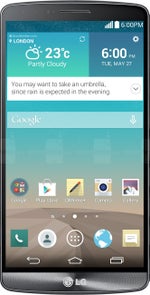
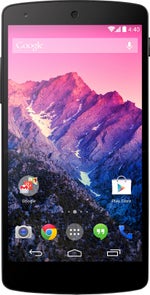












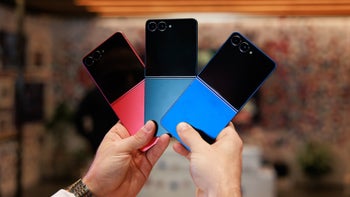
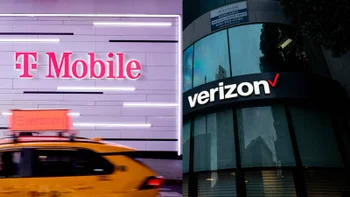
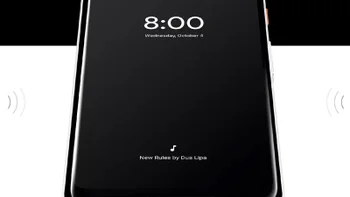

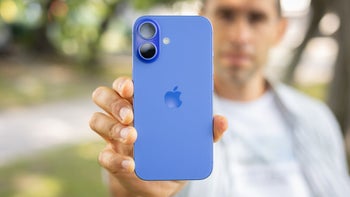
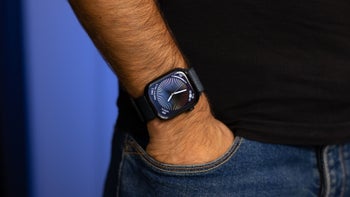

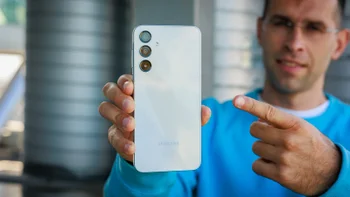
Things that are NOT allowed:
To help keep our community safe and free from spam, we apply temporary limits to newly created accounts: